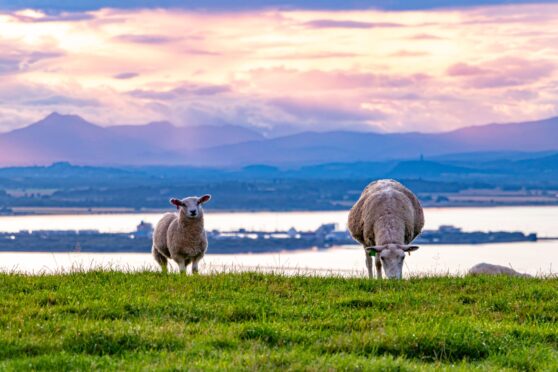The sheep trade in live rings across Scotland continues to be strong, with prime lambs averaging 436p per kg in the second week of May and hoggs reaching the highs of Easter and Ramadan at 370p per kg.
According to the latest update from Quality Meat Scotland’s Iain Macdonald, new season lambs have witnessed a year-on-year increase of 26% and an uplift of 54% on the five-year average.
Hoggs have valued 35% higher than last year’s levels.
Mr Macdonald says tight domestic supply has been one of the factors supporting farmgate prices, with last year’s lamb crop around 6% lower than in 2022.
Between June 2023 and February 2024, prime sheep slaughter at GB abattoirs had still risen marginally on a year earlier, highlighting an earlier marketing pattern.
2023 lamb crop 6% lower than in 2022
“This left fewer hoggs available at the peak of demand in March and April for Easter and Ramadan, and slaughter declined by 14% year-on-year over the two months,” said Mr Macdonald.
“Given the 6% fall in the GB 2023 lamb crop and a 2.6% reduction in throughput between June 2023 and April 2024, it suggests that slaughter will have continued to decline on a year earlier in May.”
Weekly prime sheep numbers drop around 10,000 on the year
The number of prime sheep sold each week in Scottish marts dropped to approximately 16,000 between mid-April and mid-May, down from a peak of around 26,000 per week in March.
Although the availability of new season lambs is gradually increasing, numbers remain very low.
In addition, from mid-April to mid-May, the total number sold was 25% lower compared to the same period last year.
The international trade balance has continued to contribute to a tight market, with UK sheep meat exported during the first quarter of 2024 exceeding the level of imports at 20,400t compared to 16,600t.
Exports tend to consist of carcases whereas imports tend to be cuts of lamb.
Looking forward, Mr Macdonald reckons domestic supply is likely to remain tight until the 2024 lamb crop reaches the market in greater numbers, given the much smaller carryover of hoggs into this year.
“The market could become particularly tight in the first half of June as Eid al-Adha starts on 16 June, resulting in a surge in demand ahead of this festival,” he said.
Limited availability of new season lambs at GB level is also expected due to early lambing flocks in southern England and Wales being hit hard by Schmallenberg.
However, in Scotland, a considerable proportion of lambing takes place in the second half of April and into May, a period of much more favourable weather conditions.
Schmallenberg impacts new season lamb numbers across the border
This suggests that there could be a stronger supply of store lambs from the hills this year says Mr Macdonald.
The other variable influencing this year’s lamb crop will be the breeding flock last autumn.
On one hand, ewe condition at tupping in autumn 2023 was much more favourable than in 2022, when there had been drought conditions, particularly in southern England and Wales, signalling the potential for a better lambing rate this year.
“Unfortunately, no December sheep results have been published for Scotland, but the ewe flock in June 2023 was down by 1.7% on 2022, and the 4.1% reduction in the lamb crop signalled little potential for increased retentions to the breeding flock,” he added.
The combination of tight domestic supply and strong demand, both domestically and internationally, is expected to continue supporting farmgate prices as the new season progresses.

